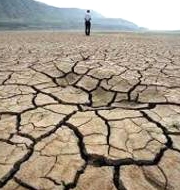17 Districts in Jharkhand Witness Drought
The Jharkhand government recently declared 158 blocks across 17 districts as drought-hit after below-average rains, impacting nearly 1.5 million farmers.
Recurring Rain Deficits
Barely 4 out of Jharkhand’s 24 districts recorded normal monsoon rainfalls in 2022. During the critical kharif planting window, the state saw an approximately 40% shortfall from average precipitation.
As a result, cropped acreage shrank drastically – rice planting was limited to just 17% of the targeted 1.6 million hectares.
History of Droughts
In over 20 years since Jharkhand’s formation, 10 drought years have been officially declared – hitting the state once virtually every three years now.
In 2022 itself, drought was announced in 88% of districts. The frequency has escalated alarmingly, causing immense rural distress.
Seeking Central Assistance
The state has urged special Central aid before the NITI Aayog to develop irrigation infrastructure and strengthen drought resilience.
Currently, only 20% of cultivable land in Jharkhand possesses irrigation facilities resulting in acute vulnerability. Nearly 500,000 hectares of agricultural land in Jharkhand lacks irrigation and solely relies on rainfalls. The Jharkhand government believes establishing irrigation infrastructure in these rain-dependent areas can enable cultivating more drought-resilient cereal and pulse crops more viably through diversification.
Longer-Term Solutions
Agricultural scientists advise diversifying from water-intensive rice to pulses and oilseeds better suited for rainfed regions. This can raise farmer incomes while building sustainability.
Simultaneously, large investments into irrigation through tubewells, ponds and canals alongside reviving traditional structures are vital to cushion against weather shocks.
The Way Forward
As per a report from the United Nations Convention to Combat Desertification, the occurrence and length of droughts globally has risen sharply since the year 2000, now accounting for 15% of natural catastrophes worldwide.
With over 80% of Jharkhand’s 32,500 villages completely reliant on agriculture, tackling recurrent droughts by nurturing climate-resilient, remunerative farming models constitutes the state’s foremost developmental priority today.
Month: Current Affairs - January, 2024
Category: Environment Current Affairs




